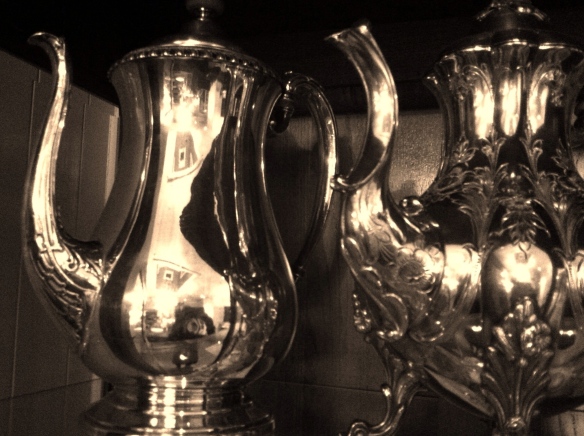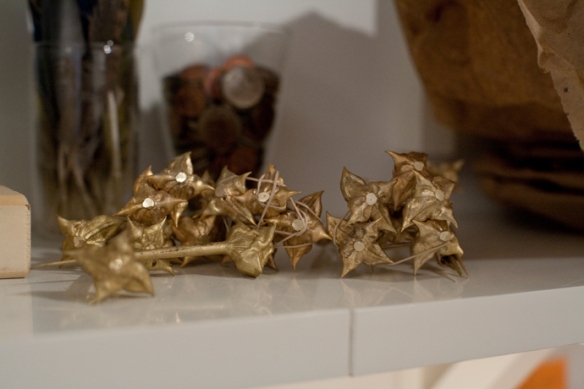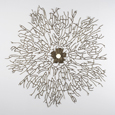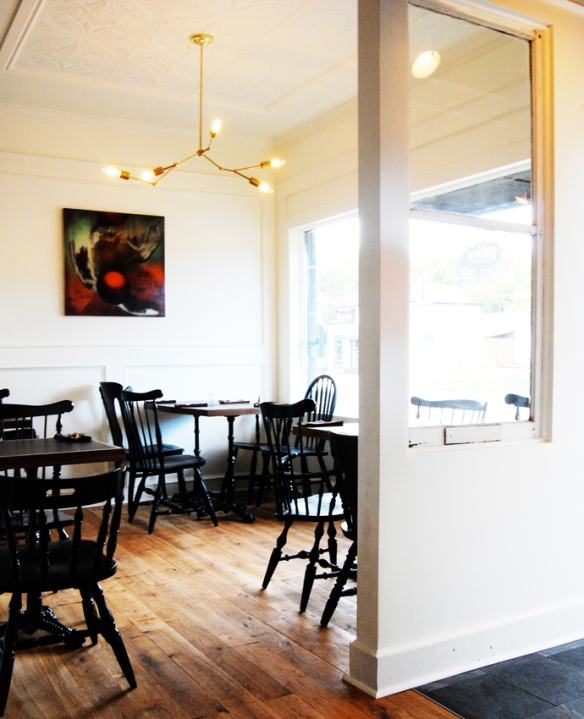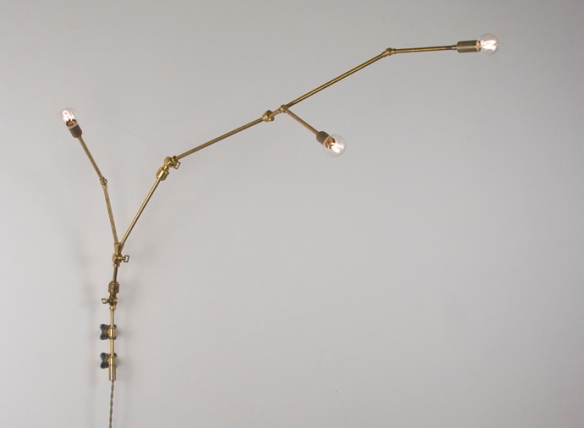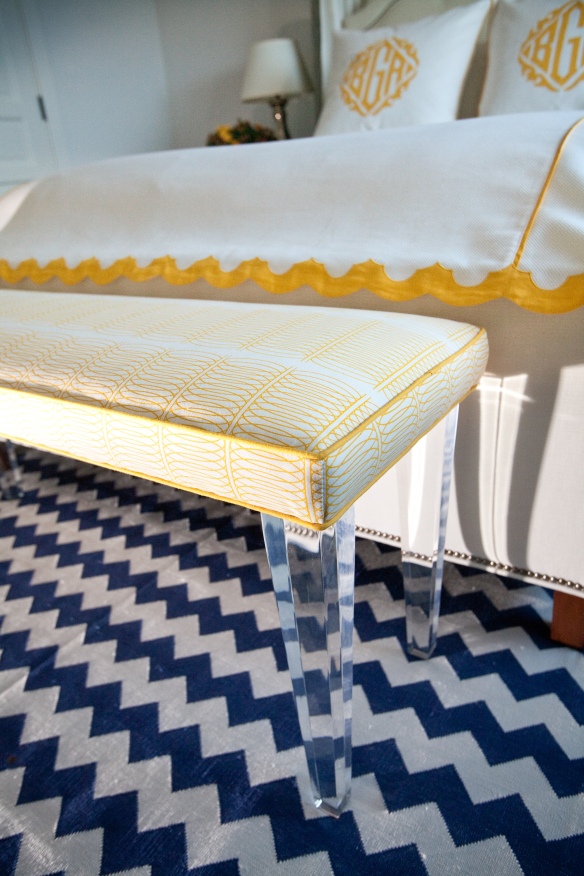 A fantastic article, 17 Things Color Consultants Want You to Know, by lead Houzz contributor, Becky Harris, came out on houzz.com this week. It is very thorough and really explains working with a color consultant–the process, rough costs and the benefits. I’m thrilled to be included in Becky’s article because I truly love learning about color and sharing my expertise. As Becky aptly points out, color consultants love what they do!
A fantastic article, 17 Things Color Consultants Want You to Know, by lead Houzz contributor, Becky Harris, came out on houzz.com this week. It is very thorough and really explains working with a color consultant–the process, rough costs and the benefits. I’m thrilled to be included in Becky’s article because I truly love learning about color and sharing my expertise. As Becky aptly points out, color consultants love what they do!
Tag Archives: Local
My Mid-Week Made-In-America Slow Luxe Design Series: Lindsey Adelman Studio
This week, more than 500 exhibitors showed their beautiful wares at the International Contemporary Furniture Fair in NYC. One of the standouts was the Lindsey Adelman Studio. And that, my dear friends, is where I will be shining my Mid-Week Made-In-America spotlight today. Of course, if you already know this studio’s work, such as the Bubble Series, you know it shines all by itself, thank you very much. 
Since the studio’s inception in 2006, the Lindsey Adelman Studio’s focus has mainly been on hand-blown glass and brass lighting. (Or should we say mind-blowing hand-blown glass and brass lighting? You decide….) In their NYC studio, this team of ten artisans designs, builds and shows their work. Lindsey Adelman Studio’s globes are hand-blown in NYC by glass artist Michiko and parts are machined out of solid brass in the U.S.. Through 1:1 scale model-making and testing, forms and ideas evolve collaboratively.
Now, this talented team, led by Creative Director, Lindsey Adelman, is branching out into jewelry, vessels, tiles, and wallpaper, in materials including wood, concrete, porcelain, gold, and stereolithography. With skill and care, the team of 10, along with its small network of local artisans, manufactures each piece to order.
One of the truly unique offerings from the Lindsey Adelman Studio is the You Make It lighting series. This democratic design concept is a whole new chic twist on DIY. Definitely not the rug-hooking kits of my youth. This is a series of lights designed with standard industry parts that you build with the Lindsey Adelman Studio’s instructions. You can make a chandelier, a mobile, a clamp lamp or a sconce. As the studio explains it, experimenting with off-the-shelf parts is how Lindsey Adelman herself got started before designing and manufacturing the custom system for the Bubble Series.
So gorgeous. So amazing. Now, even one of the most luxurious handcrafted American lighting collections is available for DIYers. What do you make of that? Something stunning, no doubt.
Is This the Best Design Advice You’ll Ever Get?
I just read my latest issue of House Beautiful, as I do every month–cover to cover. And this month it features an impeccably decorated New York prewar apartment by one of my personal favorites, Suzanne Rheinstein.
Whether or not you like Rheinstein’s restrained aesthetic (I love it!), this article contains what I would say is the single best piece of design advice you might ever get. Says Rheinstein,
Have fewer things, but better things.
So, there you have it. The best piece of design advice you’ll ever get. And it just happens that these six words are the essence of Slow Luxe Design.
What I call “inheritable design” doesn’t happen overnight. Or, as Rheinstein puts it in the HB article, “It’s not 10-minute decorating. But, I’ll tell you what I tell the young people who work for me: If you buy one good thing a year, in five years, you’ll have five really good things.”
To me, having a few good things and working toward adding more good things makes more sense aesthetically, financially and even environmentally than serially consuming trendy mass-produced goods with a big carbon footprint.
Here’s one way to think of Slow Luxe Design decision making. It’s like making a choice to eat a fresh vegetable every day instead of grabbing a bag of potato chips. Is it easy to do? Yes. Once you’ve made that commitment, you know it is pretty easy to choose something nutritious over something filled with fat, salt and chemicals. Is it hard to do? Yes. It means overcoming a strong habit. Is it worth it? Yes! Because, over a year’s time, if you choose a half-cup of broccoli over the chips, you will take in about 65,700 fewer calories. That’s a weight loss of about 19 pounds.
And the same goes for making the commitment to fill your home with good things, however slowly, and not the empty calories of cheap, trendy overseas mass production.
Am I saying that Slow Luxe Design is good for you? I am. In many ways. And it’s not just good for you. It’s the farm-to-table of the home. It’s good for the artisan who creates it. It’s good for the environment. It’s good for the economy which makes it good for the community. It’s a thoughtful part of your personal narrative. And I think all of that is worthwhile.
What do you think? Is this the best design advice you’ll ever get? And if so, what are you dreaming of adding to your home?

Well-Considered Detailing: That’s the Benchmark of Slow Luxe Design
Image
 In my last post, I showed you a happy selection of textiles from Studio Bon’s handprinted collection through Schumacher in the color way Sun. In it, was a custom end-of-bed bench that I had done in Studio Bon’s Bellows fabric.
In my last post, I showed you a happy selection of textiles from Studio Bon’s handprinted collection through Schumacher in the color way Sun. In it, was a custom end-of-bed bench that I had done in Studio Bon’s Bellows fabric.
I thought I would show you in this post what went in to creating that bench for my client on my end, the design side. And first, I want to tell you that the bench you see at the bottom of the page is not the bench that was originally part of my design. So, here’s the story:
Originally, I had ordered a bench from a supplier in Los Angeles, along with the bedside tables. When I followed up on a delivery date, I was told that I had picked up the bench. “Uh….why would I be calling if I picked it up?” I asked. Well, as it turns out, two of the same bench were ordered the same week by my firm and another firm, but only one bench got ordered–and, you guessed it, it was the other designer’s.
Okay. Here’s the first thing about design: We are all about contingency plans. Things happen. The show must go on. I already had the Studio Bon fabric in my office. I couldn’t wait for the bench. So, after thinking it through, I came up with a plan.
I got quotes and determined that I could execute my plan within budget and on time and then I put together a small concept board with a sketch, a photo of a similar vanity bench with acrylic legs, a swatch of the fabric and I headed over to see my client.
I know my client well and know that she loves Hollywood Glam, so I thought the acrylic legs had a good chance of selling the idea. I also thought they would do something fun visually with the zigzag rug that would relate to the Webster border on the Leontine Linens blanket cover. Long story short, she very thankfully signed off on the idea.

The next step was to take the Bellows fabric and design the bench. You can see by the drawing that I sweated the detailing, making sure to center the pattern and size the bench exactly so that it would scale properly to the bed and have the exact number of full repeats across. I also wanted to make sure that the pattern would line up from the front with the top. Finicky business, but worth the trouble, and all the information on the drawing takes the guess work out of fabrication for the workroom.
By the way, I ended up making the side view of the legs look the same as the front view after I got a call from the acrylic manufacturer, telling me my leg design wasn’t going to be stable. One of the best parts of design is that I have had the opportunity to learn from experienced craftspeople, trades, suppliers, vendors, reps and colleagues every day.
So, there it is. That’s what went into this Slow Luxe bench. It was made by hand locally, not overseas in a factory. The fabric is handprinted in America on natural linen. It was mindfully designed and crafted by hand in my own community. It’s inheritable, unique and it celebrates the luxury of artisan craftsmanship.
O&G Studio: A Synthesis of Memory and Invention
I’m just back from a week in the beautiful city of Vancouver and I’m absolutely buzzing with ideas and inspiration. First, I went there to attend a True Colour Expert Workshop led by none other than Maria Killam, so I’m returning to work seeing the world with a different pair of eyes. Color is such an important part of telling my clients’ stories so I feel especially grateful to have had this energizing opportunity to learn from Maria.
And speaking of effective use of color, as I was poring through this month’s issue of House Beautiful (all about American design!), well hello, I came across a sassy little chair by O&G Studio.
O&G is the partnership of jewelry designer Jonathan Glatt and architect and theatrical set designer, Sara Ossana, who met in a welding class at the Rhode Island School of Design. Together, they create innovative, high quality, sustainable modern furniture with a nod to the past, made by hand in America.
It’s beautiful, inspiring Slow Luxe Design. And it’s certainly inheritable.
Watch.
See?
This one’s a snooze. Day #18: Get Lots of Rest
Credited to Life on Michigan Avenue

Day #18 tells us to get lots of rest.
Aaaah…..nothing like a good night’s sleep to keep the creativity flowing. And nothing like a well-made bed to help you get a great night’s sleep. So, for this post, I am going to turn to Courtney Price, an interior designer from New Orleans, who recently posted the following very informative article on thread counts (myths abound!). Courtney lives in one of my favorite Slow Luxe Design cities. My son goes to school at Tulane so I have made that my excuse to get to know New Orleans both for business and pleasure. Great antiques, food, and actually my favorite source for custom linens, Leontine Linens has their flagship store there. I always get plenty of rest and a wonderful southern breakfast at Terrell House when I visit NOLA.
Now, I think I’ll take a little nap and let Courtney fill you in on bedding as I reblog her post. Thanks, Courtney!
Courtney Price Design
Design Your Living–Design Your Life ™
Buying Sheets? The Truth About Thread Counts…
Posted on January 27, 2012
Thread Count is the number of threads per square inch in the woven fabric of your Egyptian Cotton or Pure Cotton Bedding.
Manufacturers from many countries such as Egypt, China, Portugal, India and others are standardly using 2-ply or multiple-ply threads up to 4-ply, claiming the Thread Count (TC) of their Egyptian Cotton Sheets and Duvets to be double to quadruple what we consider to be the true value in the U.S. While this may seem trivial on the surface level, the impact is substantial in the quality of product you’re receiving. Rather than using one single-ply, Long Yarn Egyptian Cotton or Pure Cotton fiber of excellence, the cheapest fibers are instead twisted together to create a longer “thread.”
So what does this mean to you as a consumer? For starters, it means that your new set you thought was, say, “1000″ TC is most likely truly only 250TC to 500TC. Worse yet, it will most likely feel and wear like lesser quality than a domestic 180TC set.
An excellent set is designed to last years, while cheaper sets are usually worn through in less than 365.
Fiber length is crucial in determining the quality and longevity of your new sheets, but a difficult factor to decipher as a consumer. These short fibers cause roughness, pilling or have surface balling, and result in extremely poor wear.
A good start point of ruling out short fiber sets is to review the package for information about ply. Any reference to the product containing a multiple ply, such as 2-ply or 4-ply, is your immediate tip-off that the item you are reviewing is usually comprised of shorter fibers. Because ply involves twisting threads together in order to create a long fiber, you’ll logically know that the necessity of fibers being twisted together to create length means that the fibers used are fairly short.
The bottom line is that you get what you pay for…. So if it seems too good to be true, it likely is. Good sheets are more expensive, worth it, and get better as the years go by.
Tips for finding a good sheet:
If you prefer a crisp sheet, choose a percale weave, which is typically just a 200 thread count to 300 thread count.
For a soft, silky sheet, choose a sateen weave, which is usually 500 to 600 in thread count.
Price counts: Price is a good indicator of whether a sheet really is the thread count you want. Remember, cheap sheets are susceptible to shrinking.
Day #17: Count Your Blessings
Credited to Life on Michigan Avenue

Day 17: Count Your Blessings.
On November 18, 2008, I took my oldest son to a swim meet in Orange County. Midway through the day, I began feeling sick to my stomach. By the end of the day, I was barely able to stand up. I had my son drive me to the emergency room in La Jolla with his newly minted driver’s permit, where they sent me home with no explanation and pain medication.
After two full weeks of excruciating pain (think child-birth), fever and several tests, my old friend, Jeff, admitted me to the hospital and ran a CT with contrast. Within an hour, he knew what was going on–the inner lining of my renal artery had “dissected”, like wallpaper peeling in a room, and cut off the blood flow to my kidney.
Suddenly, I had a team of five doctors and possible diagnoses of which I had never even heard.
They were a wonderful, caring team of physicians. And they took the best possible care of me, talking to each other the entire time so that the whole effort was coordinated. Talk about blessings.
For the next two years. I was in a lot of pain, and there were plenty of unexpected twists and turns to the plot.
My kidney was healing, but if you’ve been in pain, you know pain is a funny thing. It can burn a neural pathway, and it doesn’t go away just because the cause of it is gone. My family and friends were with me the whole way, through everything, helping me through it. Yet more blessings.
And now, when I wake up, and I’m not in pain–that’s definitely something I count as a blessing.
To tell you the truth, I think November 18, 2008 was actually a huge blessing. It helped me take stock of my endless list of blessings–the most significant being that I have the internal strength and the support of those around me (my husband and three awesome kids, for starters) to get through whatever comes my way. Bring it.
I would say that November 18th even led me to where I am today: Slow Luxe Design. Everyone has a story. Slow Luxe Design lets me tell my clients’ stories in a mindful and meaningful way, with high-quality, local handcrafted, antique and vintage pieces. My clients aren’t generic and their stories can’t be told by mass-produced, generic consumer goods.
I didn’t plan on telling it, but there it is. That’s my story. Everyone has a story. What’s yours?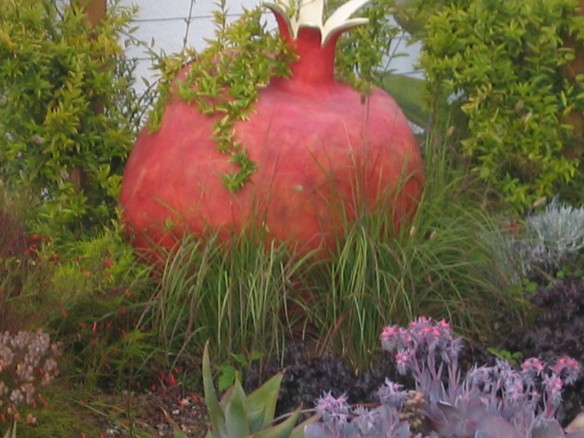
Love it! Day #16: Go Somewhere New
Credited to Life on Michigan Avenue

When I see the words “Go Somewhere New”, I feel a little spring in my step. I imagine myself in far-flung countries, picking through treasures at antiques markets, perusing sculptures in magnificent museums, people-watching in outdoor cafes and meandering through formal gardens.
Last year, I visited Charleston, South Carolina for the first time. If you haven’t been there, and you want to Go Somewhere New, go there. What a fantastic city, full of history and architecture. I was there in the spring and everything was in bloom. Wow! That’s all I’m going to say. I also had the opportunity to tour The Urban Electric Company‘s workshop. Another wow! All of their lighting is bench made to order right there in Charleston. By the way, I just received a sneak preview of their 2012 Collection. Extra wow! This collection is designed by Michael Amato, who must “Go Somewhere New” often, because he is so incredibly creative.
Anyway, as creatively inspiring as world travel surely is, changing the scenery with a quick visit to something in your own backyard can be equally energizing. I know that, because the majority of my clients are in my own neighborhood, La Jolla, it is easy for me to go for weeks without getting out of my area. So, when I go out, I try to get out of my neighborhood and my element and see things in a different way.
A few weeks ago, I went out with my husband to a craft beer and pizza establishment in the North Park area of San Diego. The crowd was young and hip–but not trying too hard to be hip–families. The atmosphere was Slow. Slow Food. Slow Beer. Slow Design. Lots of recycled and repurposed materials and big, friendly tables. The owner, my husband told me, was a former graphic designer and the place had been a window blind factory in its previous life. Hence, the name: The Blind Lady. It sure perked me up creatively speaking. I’m pretty sure that even if I go there again, it will still help me stay creative.
So, how about you? Going somewhere new to stay creative? Drop us a line!
Hey, it’s Day #13: Collaborate!
Credited to Life on Michigan Avenue

In 2004, Fast Company published the results of a study on workplace creativity in an article entitled 6 Myths Of Creativity by Bill Breen. Number 5 on the list of Creative Myths was that competition fosters creativity. According to the report, the opposite was true. “In our surveys, we found that creativity takes a hit when people in a work group compete instead of collaborate. The most creative teams are those that have the confidence to share and debate ideas. But when people compete for recognition, they stop sharing information…..”
In my own work experience, both as a writer and as an interior designer, collaboration is one of the highlights of the creative process. Whether it is with colleagues, clients, vendors or artisans, I always find that working with others enhances the end product and makes the process more engaging.
One of the best examples of this is one of my final advertising projects before I transitioned to full-time interior design. The project was a TV and radio campaign for the American launch of Red Bull Energy Drink. I was given a set of spots from the European market with existing animation to use and a tag line (Red Bull gives you wings.) I went to work writing scripts to the animated spots that would play to an American audience and then auditioned improv actors from groups like Groundlings and Second City in Los Angeles, as well as some known stand-up comedians. Ultimately, we went into the studio with “safety” scripts, but gave the actors the freedom to stray from script and put their own improvisational spin on the spots. It was a wonderfully collaborative effort. Not only was the process fantastic; it yielded some of the best work I did in fifteen years as a writer.
As a designer, every day brings some sort of invigorating collaborative effort. I especially enjoy working with work rooms and craftsmen on custom furniture, lighting and draperies. I truly value the input I get from these artisans. Their ideas, attention to detail and constant desire to keep pushing the design beyond the obvious solutions are what make working with them such a pleasure.
Finally, I want to say that the ideal situation is when I have a client who wants to collaborate in the design process. After all, this is their story. It’s just my job to help them tell it. So I really love it when I get a client who comes with pictures, ideas, swatches, colors, opinions and feedback. “Bring it!” I say, “This is your story. Help me tell it.”
Day #8: Drink Coffee
Credited to Life on Michigan Avenue

Oh, boy. It’s Day #8: Drink Coffee. I had every intention of writing a very fine post about the virtues of this glorious beverage and how it can help you stay creative. Yeah. But…..
I had visitors. Holli Everett, who represents The New Traditionalists here in San Diego, and David Harris, their Director of Marketing and Communications, visiting from New York. (Sorry about the rainy, cold weather. Really.) And, well, we got to talking about all the things I about which I can get a bit, uh, exuberant. Such as: Companies that make their products in the USA. (Which The New Traditionalists do.) And design that finds that magic balancing point between traditional and modern. (Their line does.) We talked about the idea that true sustainability is inheritability–a product that is so well designed and made that it stands the test of time.
I had a chance to look at the New Traditionalists line, which is made from sustainably harvested woods and non-toxic finishes. It’s beautifully designed in SOHO and built in New England. It feels updated but timeless. It’s thoughtful, high-quality, inheritable design. Slow Luxe Design.
I didn’t get to my post about drinking coffee because time got away as we talked about Slow Luxe Design. Slow Food. Slow Living. And it was all very stimulating. Like a Slow Luxe Triple Espresso. 